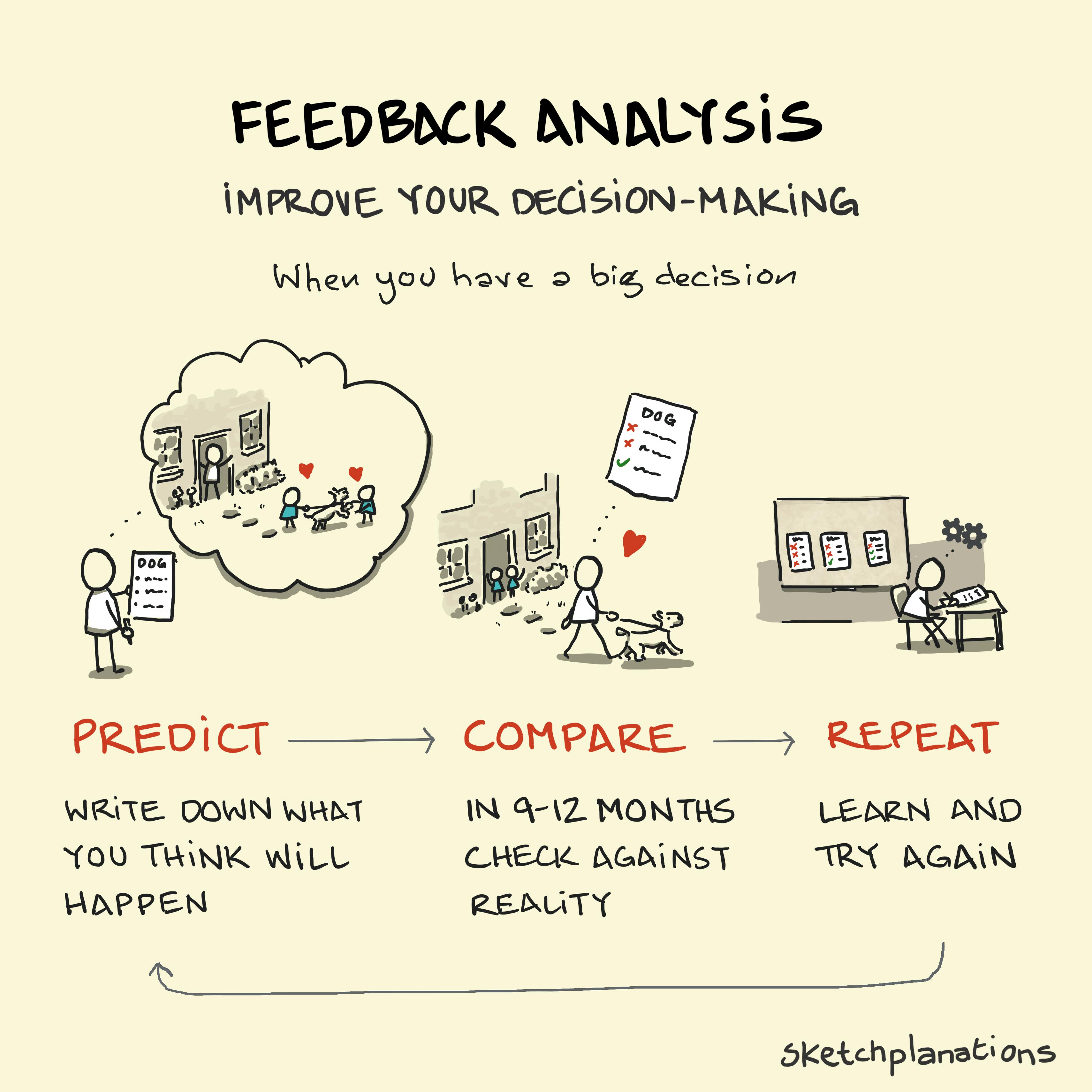Feedback Analysis

- Prints
- Copied!
👇 Get new sketches each week
Feedback analysis is a technique to improve judgment and discover your strengths. It could hardly be more simple:
- Write down what you think will happen whenever you make a key decision.
- In 9–12 months, compare what you predicted against what has happened.
- Repeat.
How does Feedback Analysis help?
I learned about feedback analysis from management consultant Peter Drucker in the small Harvard Business Review read Managing Oneself . He argues that we can only make our most significant contributions when we act from our strengths. Most people don't know their strengths, so the first step is to discover them. Feedback analysis helps you do this.
Feedback analysis reveals your strengths by showing you where you are right in your predictions and which of your intended actions achieve what you hoped. It also shows you your weaknesses, where your expectations are consistently wrong, and where your actions fall short.
Drucker suggests, "First and foremost, concentrate on your strengths. Put yourself where your strengths can produce results."
The Opportunity to do What I do Best Every Day
One of my favourite self-management reads is Strengthsfinder 2.0 by Tom Rath. It also argues that we have the most significant impact, not when we focus on fixing areas where we are weak but when we can make full use of our strengths.
The five greatest strengths I learned from that book are valuable for me to reflect on today. In fact, Sketchplanations is in some way a reflection of this:
- Ideation – you can probably tell I am drawn to and full of ideas.
- Achiever - consistently creating and moving on.
- Relator - okay, less so this one, unless it's relating through writing and sharing. Being a relator is about building strong 1:1 relationships.
- Learner - I am always adding to my stock of concepts.
- Focus - making space to stay on task and get things done.
I like to ask myself and my team members: "Do I have the opportunity to do what I do best every day?" Then, we get the best out of ourselves and others.
Examples of Feedback Analysis
Some situations where you might put feedback analysis into action:
- Taking a new job
- Hiring a new teammate
- Moving house
- Getting a pet
- Launching a new product
- Taking a course or learning a new skill
- Making predictions for your year
Write your "Drucker Memo"
Dan Pink has a 3-minute video summary of this technique in his Pinkcast. He says it's useful for at least 3 reasons:
- It helps you see your blind spots.
- It's a great way to understand your strengths.
- It makes him a little bolder—after being consistently a little pessimistic in expectations, it caused him to try more new things.
Dan says he takes a moment to write his expectations in his "Drucker memo" when beginning each new project. He then files it away and schedules a reminder in 6 months to take a look and see if his expectations are accurate. Simple.
Have you got any big decisions coming up? Maybe give feedback analysis a try.
Related Ideas to Feedback Analysis
Also see:
- Personal Panel of Advisors
- The OODA Loop
- Mistakes
- Replicate then Innovate
- The Tyranny of Small Decisions
- The Johari window
Notes
Peter Drucker is known, among other things, for coining the term "knowledge worker."
"I have the opportunity to do what I do best every day" is one of the 12 Elements of Great Managing .

